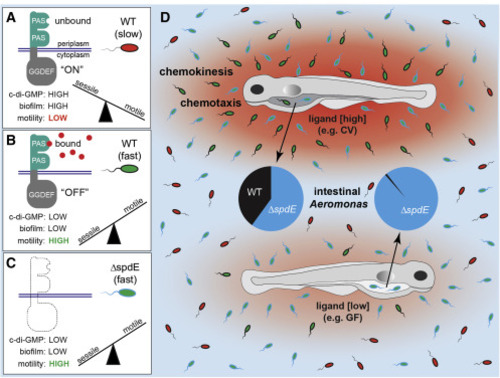Fig. 7
- ID
- ZDB-FIG-221001-13
- Publication
- Robinson et al., 2021 - Host-emitted amino acid cues regulate bacterial chemokinesis to enhance colonization
- Other Figures
- All Figure Page
- Back to All Figure Page
|
Figure 7. A model for Aer01’s SpdE-dependent motility and host colonization (A) Unbound SpdE stimulates c-di-GMP production (“ON”). High intracellular c-di-GMP levels promote a sessile lifestyle and inhibit motility. (B) Bound SpdE signals to turn “OFF” c-di-GMP production, switching Aer01 from sessile to highly motile. (C) Loss of SpdE (e.g., ΔspdE) functionally recapitulates the “OFF” state, with low levels of c-di-GMP and a highly motile lifestyle. (D) Hosts can be sources of varying amounts of SpdE ligands (red gradients) depending on microbiome composition. Aer01 can sense and respond to these amino acid gradients, via chemokinesis and chemotaxis, to modulate immigration into hosts emitting high amounts of ligand (CV fish) versus lower amounts of ligand (GF fish). |

